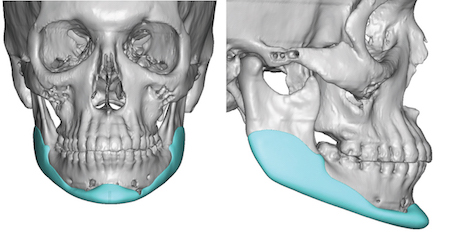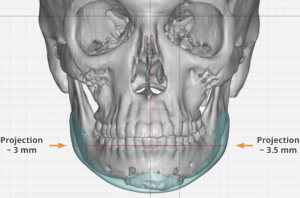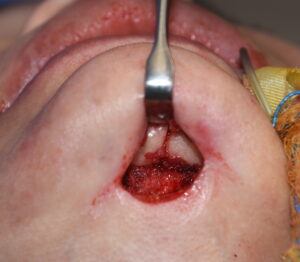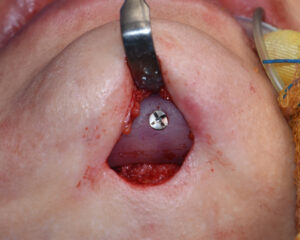Background: V line surgery is a form of lower jaw reshaping that is largely a reductive procedure. It has gained popularity around the world as it reshapes the lower face into a more narrow one. It is far more commonly performed in women although some men with very large lower jaws undergo the procedure as well.
In traditional v line surgery a full thickness resection of the jaw angles is done along an oblique line that starts high in the jaw angle area and curves downward as it approaches the chin. This type of ostectomy line is necessary to avoid the course of the inferior alveolar nerve which runs below the teeth and exists at the mental nerve foramen. In front of the ostectomy line at the front end of the lower jaw a bony genioplasty is done usually in an inverted t-shape pattern to narrow the chin and bring it forward for a more tapered appearance. This every v line surgery is a vertical reduction of the posterior body and ramus of the lower jaw and an anterior chin reshaping osteotomy.
When the bony jaw angles and mandibular body are vertically reduced there is going to be loss of jaw angle shape and soft tissue support of the overlying tissues. While these tradeoffs are not usually adverse, for some patients they may create an undesired appearance. They may wish to partially or fully restore their removed jawline to reacquire shape and soft tissue support. Usually this is not a total reversal but some form of subtotal v line reversal.
Case Study: This young female had a prior v line surgery which consisted of an oblique ostectomy of the angle and body and a t-shaped genioplasty to narrow and lengthen the chin. While she had a more narrow lower facial appearance from the front, the oblique and side views showed a lack of any visible jawline and a vertically short posterior face with loss of soft tissue support. A 3D CT scan showed the postoperative bony v line bone shape.
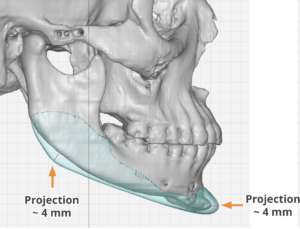
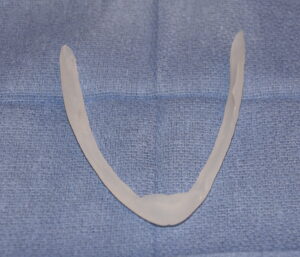

Highlights:
- The partial or complete restoration of a jawline after v-line surgery can only be done by a custom jawline implant design.
- In many v-line surgery reversals, what the original jawline shape/size may not be known but the concept is subtotal reversal.
- These very small custom jawline implants are really caps along the bone to bring back some of its shape and provide enhanced soft tissue support.
Dr. Barry Eppley
Indianapolis, Indiana

